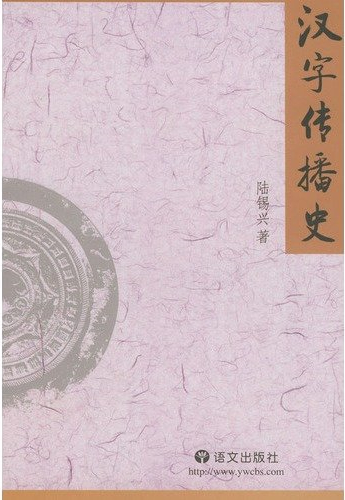Dissemination of Chinese characters

A Dissemination History of Chinese Characters
Author: Lu Xixing
Publisher: Language & Culture Press
Chinese characters and related script are an invaluable aspect of human civilization. However, research on the dissemination of Chinese characters and the development of character-based writing systems is a relatively new area of study. Throughout history, due to the influence of Chinese characters, a number of related script languages appeared in East Asia, including the Tangut script, the Khitan script, the Jurchen script, Japanese, Vietnamese nom characters, the Zhuang writing system and other national forms of writing that all have key elements based on the Chinese writing system.
A Dissemination History of Chinese Characters by Lu Xing investigates the origins and evolution of the Chinese character-based writing system while bringing up new ideas on how Chinese characters were disseminated and developed. Lu argues that dissemination of characters is essentially cultural diffusion. First, words and symbols are the most important cultural achievement. Second, compared with the phonographic alphabets, Chinese characters are more closely tied with culture. A character contains phonetics, shape and meaning, thus possessing more cultural connotations.
The dissemination of characters has promoted cultural assimilation. Lu focused on the complex relationship between the dissemination of Chinese characters and cultural exchanges between nations. For example, the Northern nations, such as the Tangut, the Khitan and the Jurchen were willing to absorb Chinese culture while maintaining their own ethnic culture. Therefore, most of the time they used Chinese characters while sometimes creating their own characters based on the same writing system. The Southern nationalities, however, having undergone in a process of assimilation with Chinese culture, did not overemphasize the characteristics of their national culture. The Chinese character-based writing system has various ways of creating characters. Dialect zones such as Wu, Cantonese, and Min created dialectal characters based on their distinctive pronunciations. These characters created are called “Fang” characters, and they complement mainstream Chinese characters and are used locally. The emergence of Fang characters demonstrated the great flexibility of Chinese characters in adapting to the languages of the minority groups.
The phonogram, which refers to the part of a character that indicates the pronunciation but expresses no meaning, had been extensively applied to Buddhist classics. In 1900, a large number of valuable literary works were excavated at the Mo Kao Grotto at Dunhuang. Among them, the Dunhuang Music Score drew great attention. A lot of research has been conducted on the score, but few have examined it from a perspective of Chinese characters. Lu pointed out that the development of phonograms demonstrated the easternization of Buddhism and Sanskrit letters. Sanskrit letters have sound but no meaning. They make sense only in sentences. In addition, Lu introduced the three stages of dissemination of Chinese characters in Japan, pointing out that the Japanese hiragana belongs to the phonogram type as well.

 PRINT
PRINT CLOSE
CLOSE